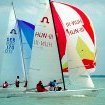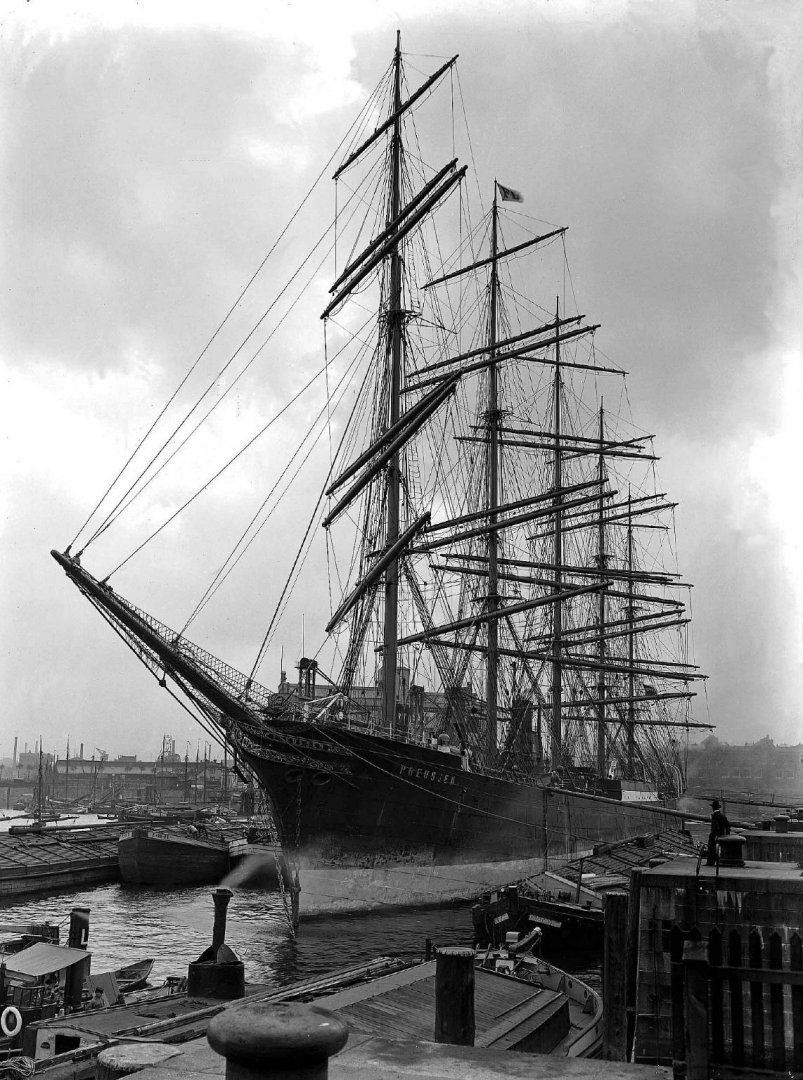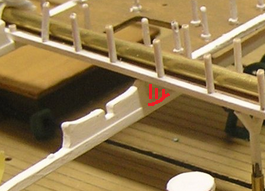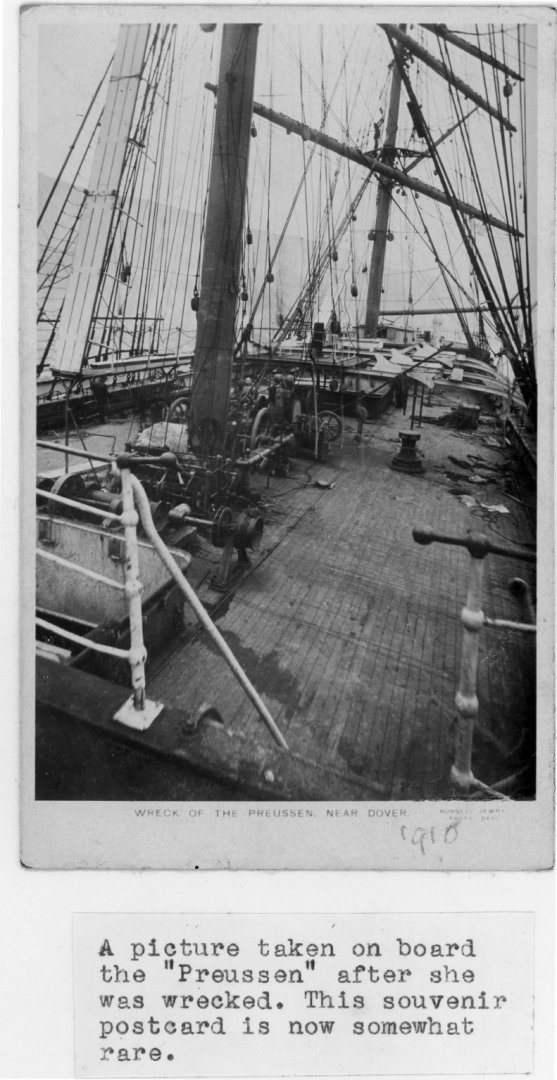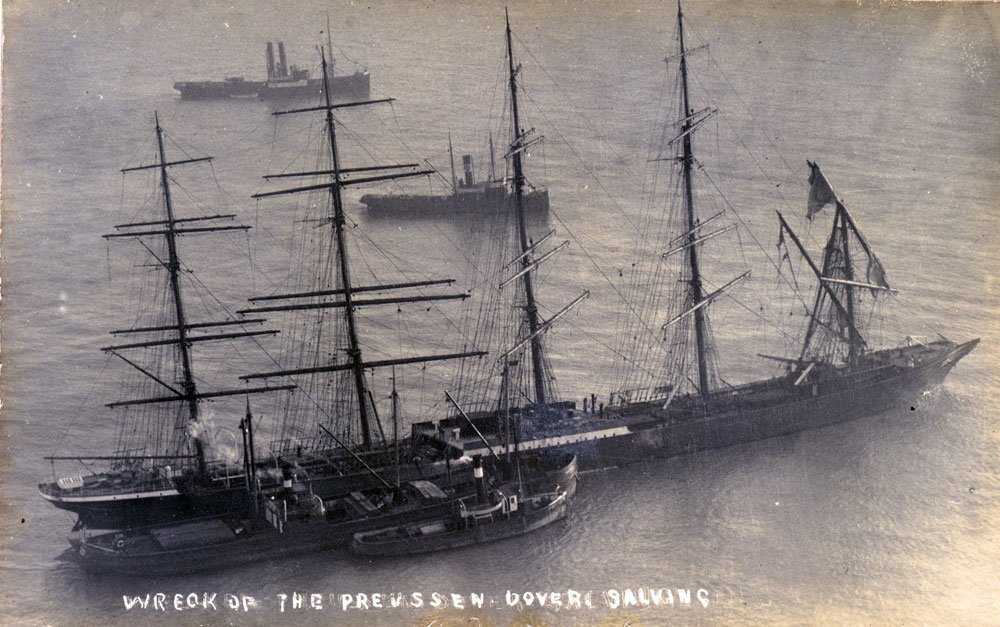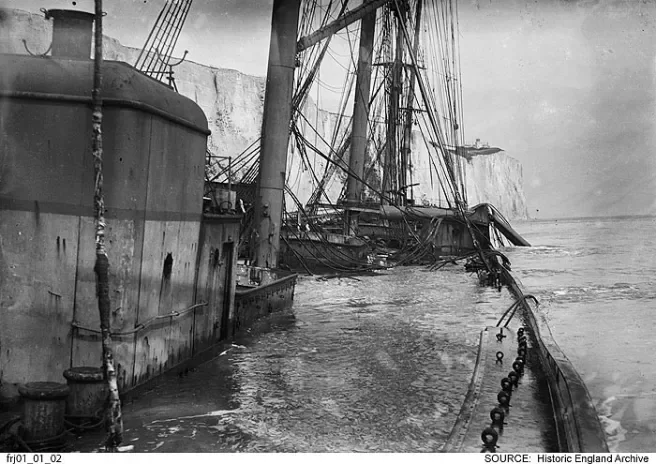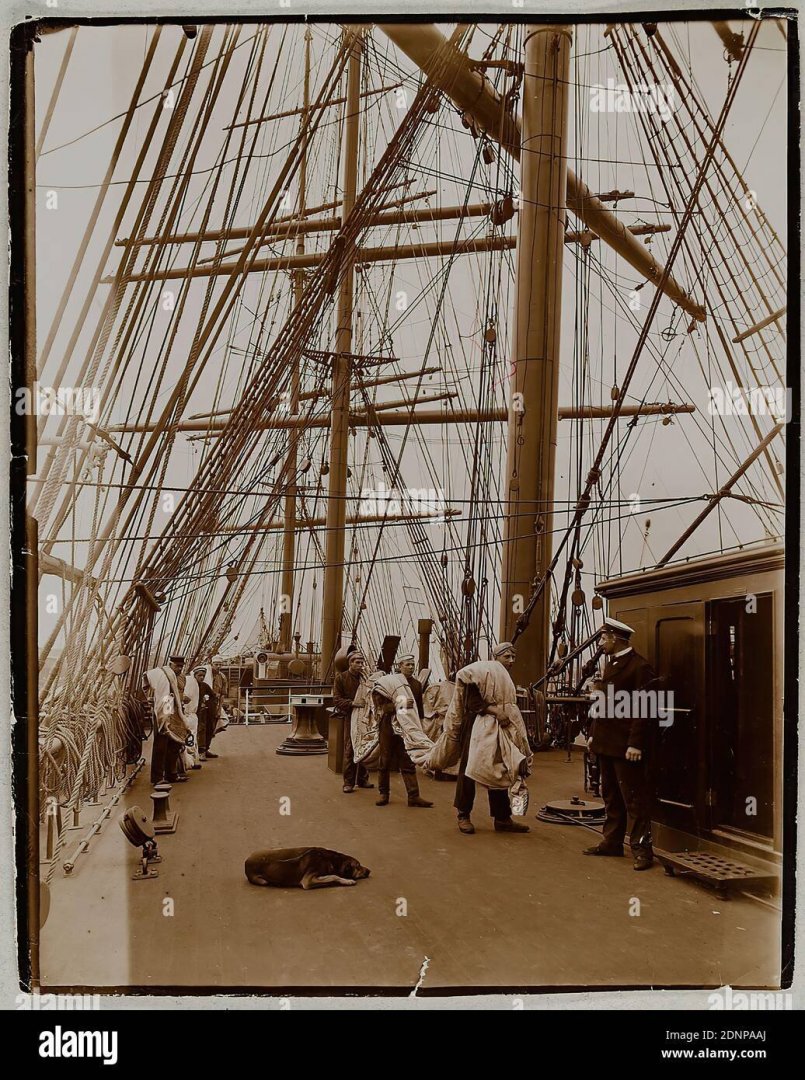-
Posts
395 -
Joined
-
Last visited
Content Type
Profiles
Forums
Gallery
Events
Everything posted by Veszett Roka
-
Here is another pic, however it is not so informative. I think your anchor crane is correct for Preussen.
-
Absolutely. And this is the reason why i didn't started a build log for my Pamir, because it would be a dead log - i have so little time for build her 😢
-
Quite a windy journey for that tailgunner... But at least nobody will notice the 'noise' after a bean lunch.
-
Folks, i came to the party late, but started following this ship. On Youtube, try Ebroin's miniatures. He's a master of masking, chipping, etc. https://www.youtube.com/c/EbroinSong/videos?view=0&sort=dd&shelf_id=0
-
Hi Ian, the Y shaped posts are the right, so the Heller version. Here is a picture from the wrecked Preussen, on far left a support post clearly shown. Also i found a picture which show the forward catwalk is in level to the forecastle deck - i assume all would follow that design. Third one the very high chimneys. My previous picture in post #99 and the third one displays much lower chimneys, you might consider to shorten them before foremast rigging. Correction: earlier pictures show the high chimneys too. So they cut shorter sometimes, both version will be correct.
-
Hi Ian, are you sure about the catwalks height? All of the windjammers i seen had levelled catwalks without any steps. I know the Presussen is unique, so i'm unsure, but i think the solution is the same. Unfortunately i found very few picture on board of Preussen. The models i see all sported flat catwalks. But one, this is clearly shows how the forestays tied together, what we have discussed earlier.
-
Ah, it makes sense. I understand your concerns here, i would need properly thinned paints too. Especially because the old models have several layers of paint plus lacquer. Still don't know yet how to remove (or overpaint) the old colors. Also the fine pigmentation is important, i think Humbrol enamels is one of the best in this manner (disadvantage is their tendency to sedimentation, and you cannot know how long a paint bucket kept on the self). Thank you!
-
Why it was tricky? This seems quite simple for me using masking tape and brush, so i'd like to learn some technique for the future. Check out my Titanic here, it was entirely hand-painted by brushes. Also i'd like to restore and bash a lot my childhood models (Russian battleship Potemkin and ice breaker Lenin), both 1:400 and i think your tips will be needed there.
-
Yes, you are correct. Buda is built on hills, Pest is flat. Although its a slope, and far points of Pest is higher than the Buda hills. Pest residents says that Pest is better because the skyline of Buda hills, but from Buda you can see the flat Pest only
-
I remember when i drove a 1961 Skoda Octavia. The light switch was exactly the same position what the picture shows here, also the handbrake where the red arm on this pic. Everything was made from metal, very few rubber or plastic...
-
Thank you Bill, indeed it is a beautiful city. Pity the actual government goes mad and care nothing, thus the beauty slowly fades away. Not alone in the world i think. Just drop me a mail once you come here, surely we would pop a few (or more) beers together. Or bourbon if you prefer KY drinks Shipmodelers here considered like "holy fools", the main community thinks we are sick because the tiny scales (their favorite is 1:48 because the planes and armories) and due the exhaustive works of rigging etc. However the finished shipmodels are very well appreciated, and the wow factor is high. Anyhow, my name Veszett Roka means rabid fox in hungarian (veszett=rabid, roka=fox), i got this nickname when started racing. I love it!
-
Can i get the plans for the 3D printed cat over there? 😄
- 460 replies
-
- Finished
- Flower-class
-
(and 1 more)
Tagged with:
-
AH, and not to forget, since i commented here: it's me. Although the picture is not too fresh, its been taken a few years back. Now i have more grey hair, and a newer model of telephone
-
That big bar is the traveller of the main sail. Better not step on it when ship turns against the wind I love the hidden engine controls in the drawer.
-
From the picture, yes, this is the tiller, and i don't think it moves twin rudder. Also i don-t think it reaches the bulwark at any side, however it has plenty of space there. The tackle is on windward side only since the ship is trimmed to go windward a bit (and due its hull shape - it is designed this way) - dutch people call this 'luvgierig'. Hence the helmsman need to pull the tiller always to the windward side a bit, and the tackle helps him. Daniel will correct me if i'm wrong.
About us
Modelshipworld - Advancing Ship Modeling through Research
SSL Secured
Your security is important for us so this Website is SSL-Secured
NRG Mailing Address
Nautical Research Guild
237 South Lincoln Street
Westmont IL, 60559-1917
Model Ship World ® and the MSW logo are Registered Trademarks, and belong to the Nautical Research Guild (United States Patent and Trademark Office: No. 6,929,264 & No. 6,929,274, registered Dec. 20, 2022)
Helpful Links
About the NRG
If you enjoy building ship models that are historically accurate as well as beautiful, then The Nautical Research Guild (NRG) is just right for you.
The Guild is a non-profit educational organization whose mission is to “Advance Ship Modeling Through Research”. We provide support to our members in their efforts to raise the quality of their model ships.
The Nautical Research Guild has published our world-renowned quarterly magazine, The Nautical Research Journal, since 1955. The pages of the Journal are full of articles by accomplished ship modelers who show you how they create those exquisite details on their models, and by maritime historians who show you the correct details to build. The Journal is available in both print and digital editions. Go to the NRG web site (www.thenrg.org) to download a complimentary digital copy of the Journal. The NRG also publishes plan sets, books and compilations of back issues of the Journal and the former Ships in Scale and Model Ship Builder magazines.


